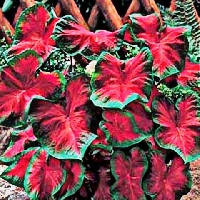
How many flower bulbs to buy depends the flowers and the area you are planting
Determining how many flower bulbs to buy is based on the size of the area being planted and how many flowers you hope to end up with. You may want to err on the side of caution. If you hope to end up with 20 tulips in your front yard, you may want to plant more than 20 in the event some of the flowers do not come to fruition. When not planted correctly (as in, upside down) or deeply enough, the flower isn’t going to grow properly and you end up with bare spaces and gaps in your design.
According to the National Gardening Association, the amount is determined by the flower bed size and the type of bulb planted.
Square flower bed
For example, if you have a 10 foot square flower bed and are planting large tulips, you will want approximately 65 tulip bulbs. If the bed is 100 square feet, 1,100 are required.
If planting daffodils or daylilies in a 10 foot square bed, you should purchase 75. In a 100 square foot bed, 1,110 are needed.
Circle bed
For circle beds, determine the radius by dividing the width (which is the diameter) by two. Multiply the radius by itself and then multiply that number by pi (3.14.) The answer equals the area of the circle bed.
When planting a round flower bed, you will need 1,700 if they are planted three inches apart, and 50 if they are planted 18 inches apart.
~
Triangle bed
For a triangle bed, multiple the height by the base and divide that number by two. the height is the distance from the base to the opposite angle. The base is the longest side.
Other basic formulas for figuring out how many you need ……
- Convert your measurements from inches to feet. Do this by dividing the number of inches by 12.
- If the bed is square or rectangle, multiply the length by the width which equals the area.
- The bigger the bulb the more flowers it produces the first year after planting.
- Make sure the colors you select do not clash but complement one another if the flowers are going to bloom simultaneously.
- Group them together according to their bloom season. There are flowers that bloom early, mid-season and late.
- Plant in a hole that is three times deeper than the bulb’s greatest diameter (width.)
- Plant one on top of another. For example, plant a small crocus bulb on top of a large tulip bulb.
- Feel free to mix bulbs together.
Other ideas ….
A caladium is the perfect plant for flower boxes, borders as well as for flower beds. This is a rather unusual looking flower, which makes it stands out. Gardeners describe caladiums as lush, adding a tropical feel to a garden.
When grown in shady areas, the leaves of the caladium plants achieve their deepest colors and biggest size. The leaves are a mix of red, pink, green and white. Some have trim on the outer edges or along the veins. They are quite beautiful.
These bulbs are available in medium, large and jumbo. The larger the blub, the more leaves produced. The plant generally prefers some sun and some shade but some varieties are tolerant of the heat and sun.
